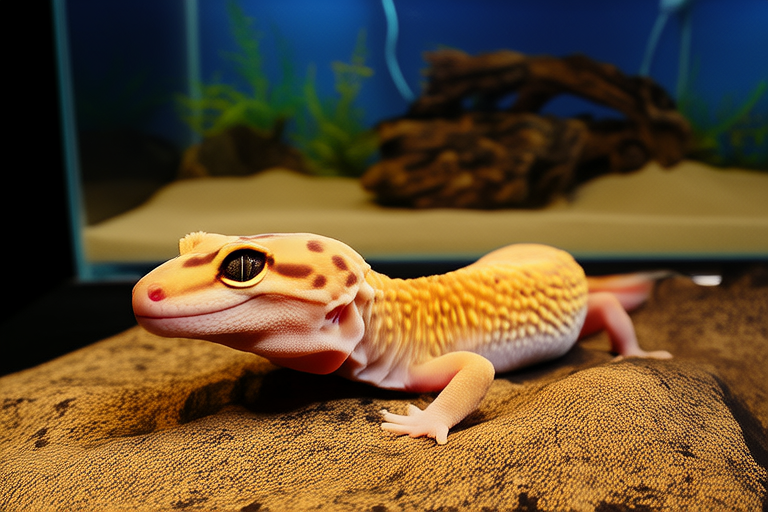Bearded Dragon Care: Common Mistakes New Owners Make
Welcome to the wonderful world of bearded dragon ownership! These charismatic reptiles have become increasingly popular pets due to their docile nature, fascinating behaviors, and relatively low maintenance requirements. However, like any other pet, they come with specific needs that, if not met, can lead to health problems. This article aims to guide new bearded dragon owners through some of the most common mistakes made and how to avoid them.
Introduction to Bearded Dragons
Native to Australia, bearded dragons are known for their distinctive spiny appearance under their chin, which inflates when they feel threatened or during courtship displays. They are omnivorous, eating both insects and plants, and thrive in warm environments. Their lifespan ranges from 8 to 12 years, making them a long-term commitment.
Common Mistakes New Owners Make
Incorrect Diet
One of the most frequent errors new owners make is providing an inappropriate diet. Bearded dragons require a balanced mix of protein (insects) and vegetation. A diet lacking in variety can result in malnutrition, leading to stunted growth and weakened immune systems.
Why It’s Problematic: A diet deficient in essential nutrients can cause metabolic bone disease (MBD), characterized by softening of bones, leading to fractures. Excessive protein intake can also harm kidneys and liver function.
Signs of Issues Arising: Lethargy, weight loss, swollen limbs, and difficulty moving are all indicators of potential dietary issues. Additionally, if your dragon appears less active than usual or has a distended belly, these could signal underlying health problems.
How to Correct or Avoid: Provide a varied diet consisting of leafy greens like kale and collard greens, occasional fruits, and insects such as crickets and dubia roaches. Gut load insects before feeding them to your dragon; this means feeding the insects a nutritious diet so they pass on those nutrients to your dragon. Also, dust the food with calcium and vitamin D3 supplements twice weekly to ensure proper bone development.
Improper Temperature Management
Maintaining the right temperature gradient within the enclosure is crucial for a bearded dragon’s metabolism and overall well-being.
Why It’s Problematic: Incorrect temperatures can prevent digestion, leading to regurgitation or impaction. Too cold temperatures can cause brumation, a state of dormancy similar to hibernation, which is not natural for captive animals and can be harmful.
Signs of Issues Arising: If your dragon spends too much time basking or refuses to eat, it might indicate that the temperature isn’t optimal. Conversely, excessive hiding or lethargy can point towards being too cold.
How to Correct or Avoid: Use a heat lamp to create a basking spot reaching around 100°F (38°C) at one end of the tank while keeping the cooler side between 75-85°F (24-29°C). Utilize thermometers to monitor these temperatures accurately. Ensure that the lighting cycles mimic day and night cycles, providing 10-12 hours of light per day.
Inadequate Enclosure Setup
The size and setup of the enclosure play significant roles in the health and happiness of your bearded dragon.
Why It’s Problematic: An enclosure that’s too small restricts movement and can lead to stress, obesity, and muscle atrophy. On the other hand, an overcrowded space can encourage aggression among multiple dragons.
Signs of Issues Arising: Aggressive behavior, constant hiding, and lack of activity are signs that something might be wrong with the environment. Additionally, if you notice your dragon frequently rubbing its face against objects, it could indicate discomfort or stress.
How to Correct or Avoid: A single adult dragon requires at least a 40-gallon tank. Include climbing branches, rocks, and hides to offer security and opportunities for exercise. Ensure that there are no sharp edges or toxic materials within the enclosure.
Tips for Maintaining a Healthy Environment
Regular cleaning and maintenance are vital for preventing illness and ensuring comfort. Clean the substrate weekly and sanitize the entire enclosure monthly. Remove uneaten food promptly to avoid attracting pests.
Provide fresh water daily, ensuring it remains clean and accessible. Monitor humidity levels; they should be kept low, typically between 30-40%. High humidity can promote mold growth and respiratory infections.
Lastly, never handle your bearded dragon immediately after feeding, as this can cause regurgitation. Allow at least 24 hours before handling post-meal.
The Importance of Regular Veterinary Care
Even with the best care, unexpected health issues can arise. Regular visits to a veterinarian specializing in reptiles can help catch problems early. During these check-ups, vets will examine your dragon for signs of parasites, infections, and other ailments.
It’s recommended to take your bearded dragon for its first vet visit within the first few weeks of bringing it home. Annual check-ups thereafter are advisable. Additionally, if you notice any unusual behaviors or physical changes, consult a professional immediately.
Raising a bearded dragon can be incredibly rewarding once you understand their unique needs. By avoiding these common pitfalls and providing consistent, high-quality care, you’ll set yourself up for success in creating a thriving, happy habitat for your scaly friend.
